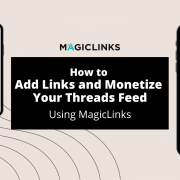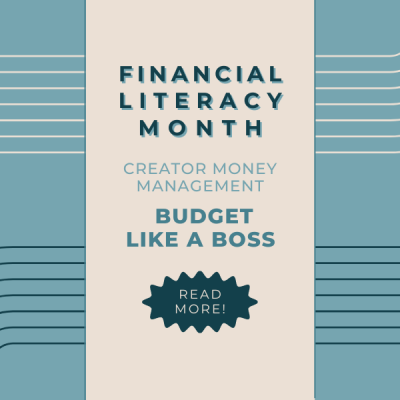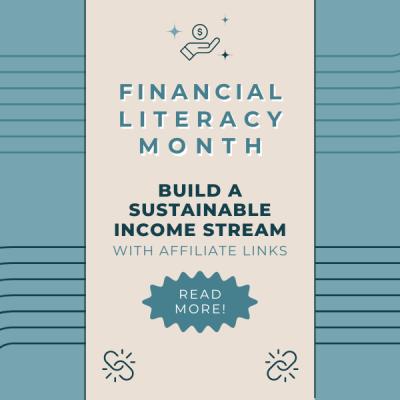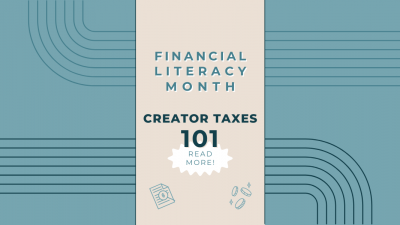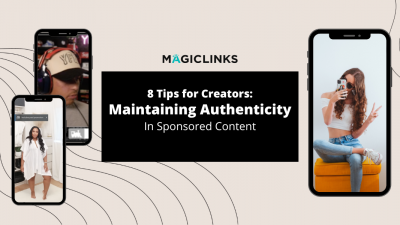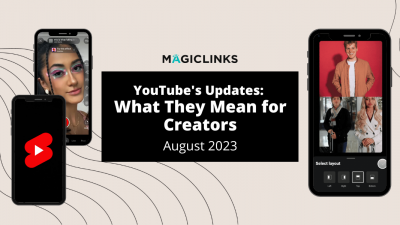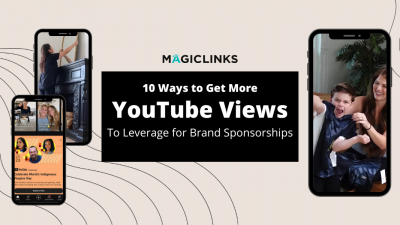For passionate content creators, YouTube continues to stand as one of the most prominent and influential platforms. With that said, however, even though the site has kickstarted the careers of so many now-famous influencers, many up-and-coming creators still need to figure out how to replicate that level of success, and getting consistent views and growing subscriber counts on YouTube often feels like a shot in the dark.
You may have some vague idea of what you’re aiming for—becoming an influencer and having your videos go viral—but it can be tough to nail down how to get there. Even still, putting together and uploading your videos is only half of the equation: Understanding YouTube’s algorithms often stands in the way of the success of many budding channels.
Let’s start with the basics: What is an algorithm, and how does the YouTube algorithm work? Then, we’ll dive into how you can use it to your advantage to expand the reach of your content.
What Is the YouTube Algorithm and Why Does It Matter?
Statistics from Zippia show that over 500 hours of content are uploaded to YouTube every minute, which means there has to be some mechanism in place to organize it all and deliver a smooth viewer experience. Enter the YouTube algorithm.
At its core, the YouTube algorithm is a data collection instrument. Analyzing 80 billion data points each day, it determines which factors attract visitors and keep them on the site the longest. It then rewards videos that incorporate those elements by recommending them to more viewers.
There are three main places YouTube will recommend videos:
- The homepage
- In search results
- The suggested videos sidebar
YouTube’s recommendations in each place are based on several factors. For instance, recommended videos on the home page have more to do with a video’s performance and a user’s watch history, whereas the suggested videos column is influenced more so by the topic of the video a user is currently watching. Meanwhile, things like the SEO metadata attached to each video heavily influences search result listings.
Why the algorithm matters to content creators
As a content creator on YouTube, you aren’t just making YouTube videos for your own entertainment. You want to share what you’re passionate about with the world, but if no one sees your video content, it can be hard to stay motivated. Paying attention to the YouTube algorithm, therefore, is how you work to increase your viewership and subscriber count.
Below, we’ll talk about which factors are crucial to accomplishing this goal.
How Does the YouTube Algorithm Work?
While there’s no easy way to game the YouTube algorithm, there are several opportunities to work with it. These require you to know how the system works in the first place.
When recommending videos for users to watch, YouTube cares about one thing: keeping users on the site. And, the platform’s strategy is working, as the average time spent on YouTube daily continues to climb.
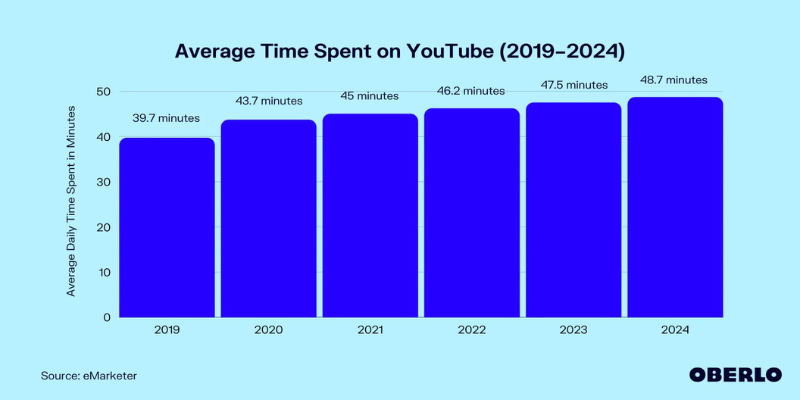
Source: Oberlo
Over time, the following four factors have emerged as the most critical in helping them accomplish that goal:
Relevance
Relevance encompasses everything that search engine optimization (SEO) experts would recommend including when uploading video content to any website: The keywords you’re targeting should appear in your tags, title, description, and video content, as they are what the YouTube algorithm uses to determine what your video is about and whether a user would benefit from watching it at any particular moment.
Engagement
It’s not enough for users to click on your video. YouTube wants to know how long they stay watching it and how much of your other content interests them. YouTube also wants to see that people are engaged enough to like your video, share it with others, and comment on it.
The good news: among MagicLinks creators, engagement rates continue to rise. In fact, in 2023, creators have seen an average engagement rate of 5.4%, well above overall YouTube averages.
Quality
While quality may seem subjective, YouTube uses the term to describe channels, videos, and creators it deems trustworthy, and the YouTube algorithm rewards those who build authority and become the go-to guru for a particular niche. It’s important to know that relevance and engagement are both involved in determining video quality, as well as surveys the site conducts with users.
History
When people log in to YouTube, they see a collection of videos and Shorts that the site recommends they watch. By factoring in what they’ve watched, searched for, and clicked on recently, YouTube can garner a general idea of what each person wants to see. Watching a considerable amount of videos about cats, for instance, means YouTube will keep showing them more cat videos until they indicate interest in something else.
A Note About Personalization
Because search history is such a pivotal factor in the YouTube algorithm, it’s hard to predict precisely where and when your video will show up. The best thing you can do is focus on the factors you can control or influence, such as relevance, quality, and engagement. Make videos that your niche needs, and both YouTube and your audience will reward you.
The YouTube Shorts Algorithm
Short-form video content became a highly-popular creative outlet with the emergence of TikTok. Instagram followed suit with Reels, and shortly after, YouTube introduced Shorts, which have proven successful at keeping people on the platform to the point that YouTube is pouring a ton of its resources into that area. Therefore, content creators must take advantage of the opportunity the new format presents by building their Shorts library.
While the YouTube Shorts algorithm frequently changes and differs slightly from the long-standing rules that govern traditional videos, the following are the five most important factors you should focus on for your strategy in 2023:
Relevance
Just because you’re making short-form content doesn’t mean you can skip over SEO efforts. With the much smaller runtime of Shorts, having a relevant, keyword-rich title, tags, and description is even more critical.
Engagement
Users can still like and comment on YouTube Shorts, so if people are engaging with your content via likes and comments, it’ll signal to the YouTube algorithm that people not only want to watch your Shorts but also enjoy your content enough to say something about it and discuss it with others in the same audience.
Similarity
The concept of similarity is a part of the YouTube Shorts algorithm that is all about related content. If your videos are something that people in related audiences like or find helpful and interesting, you’re likely to get your Shorts in front of more eyes.
History
The Shorts that users will see depend on their search and watch history, just as their recommended video feed does. Because YouTube wants to show people similar content, the more they watch Shorts based on a particular topic, the more YouTube will show them Shorts surrounding that topic.
Watch Time
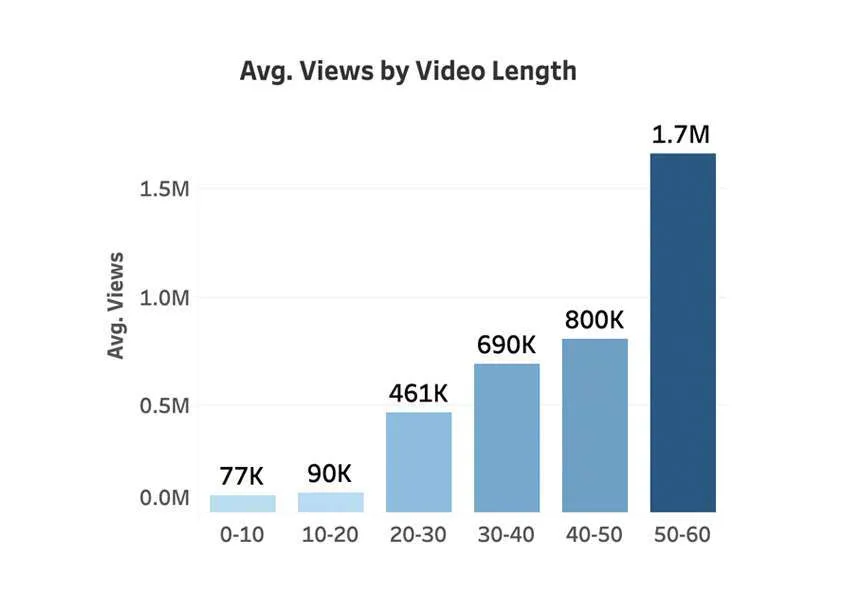
Source: Paddy Galloway on Twitter
While watch time naturally matters less with Shorts than with long-form content, YouTube still wants to know that viewers are watching your Shorts all the way through. If you cannot keep their attention for even a few seconds, viewers will likely be wholly uninterested in what you have to say in your longer videos and may not stick around on the site long enough to find out.
Experts may have recommended creating a separate channel just for your Shorts to align with the YouTube algorithm — 2022 was a year when the feature was still in its infancy — but there’s no longer a need to. Instead, focus on delivering small bits of entertaining or helpful content that leave your viewers wanting more.
5 Ways to Use the YouTube Algorithm to Your Advantage
Now that you know how the YouTube algorithm works, you need to plan to use your newfound knowledge to get more views and subscribers. Words like “relevance,” “engagement,” and “quality” can seem vague, and it might be tricky to come up with a solid strategy to implement each of these factors.
If you don’t know what to do next, start with the following six tactics:
1. Keywords Matter
In its simplest form, content relevance is determined strictly by your metadata; that is, your title, tags, and description. Therefore, you need to take YouTube keyword research as seriously as you would when ranking on any search engine. You can simply grab your favorite keyword tool and find a few phrases with decent search volume that you’d like to rank for.
In addition to your metadata, ensure that your chosen keywords appear in your video content, transcript file (for closed captions), and file name to maximize your chances of ranking high in search results.
2. Thumbnails are Critical
Make sure you use a custom thumbnail that will reliably entice users to click on your video. Ensure that your thumbnail images going forward are all branded, meaning they have a similar look and feel across all of your videos and that they are relevant to your content and consistent with what users within your niche expect.
3. Go Long and Short
Shorts and long-form videos are designed to work in tandem. While the latter will continue to be your bread and butter for garnering views and subscribers, Shorts will allow you to create easily digestible content that gets viewers used to your brand and voice and interested in what you have to say. If it’s helpful enough, they’ll click through to your channel to seek out your other content.
4. Go Beyond YouTube
It’s telling that two of the top five all-time most popular YouTube search terms are “TikTok” and “tik tok.” If you’re on YouTube, chances are good your audience is also on TikTok. It’s a good idea to bolster your views and engagement on YouTube by creating a community on other social media platforms.
When you create a YouTube video, tell your Instagram and TikTok followers, for instance, about it, and ask them to like, comment, and subscribe. YouTube doesn’t care where the engagement comes from: Just show the algorithm that your audience finds your content worth watching, and it’ll work out in your favor.
5. Pay Attention to Retention
Ensure you look at each video’s statistical data to see if viewers are watching until the end. If they’re not, use your video editing skills or YouTube’s card feature to re-grab your audience’s attention at the point when most users drop off and then direct them toward other content they may be more interested in.

Going from Content Creator to YouTube Influencer
Becoming a successful YouTube influencer will mean different things for different people, depending on their goals. Some want as many followers as possible; some want to develop a small, devoted audience. Either way, when your videos start to rise in search rankings, viewership, and subscribers, it’s a good indication of your potential for brand sponsors!
If you’re new to YouTube or simply feel unsure about what you’re doing, note what factors move the algorithm and plan accordingly. And, keep in mind, YouTube’s algorithm does change; it’s important to keep an eye on these updates and adapt accordingly. With a passion for your niche and an understanding of the platform, you can continue to grow your channel and audience over time!

